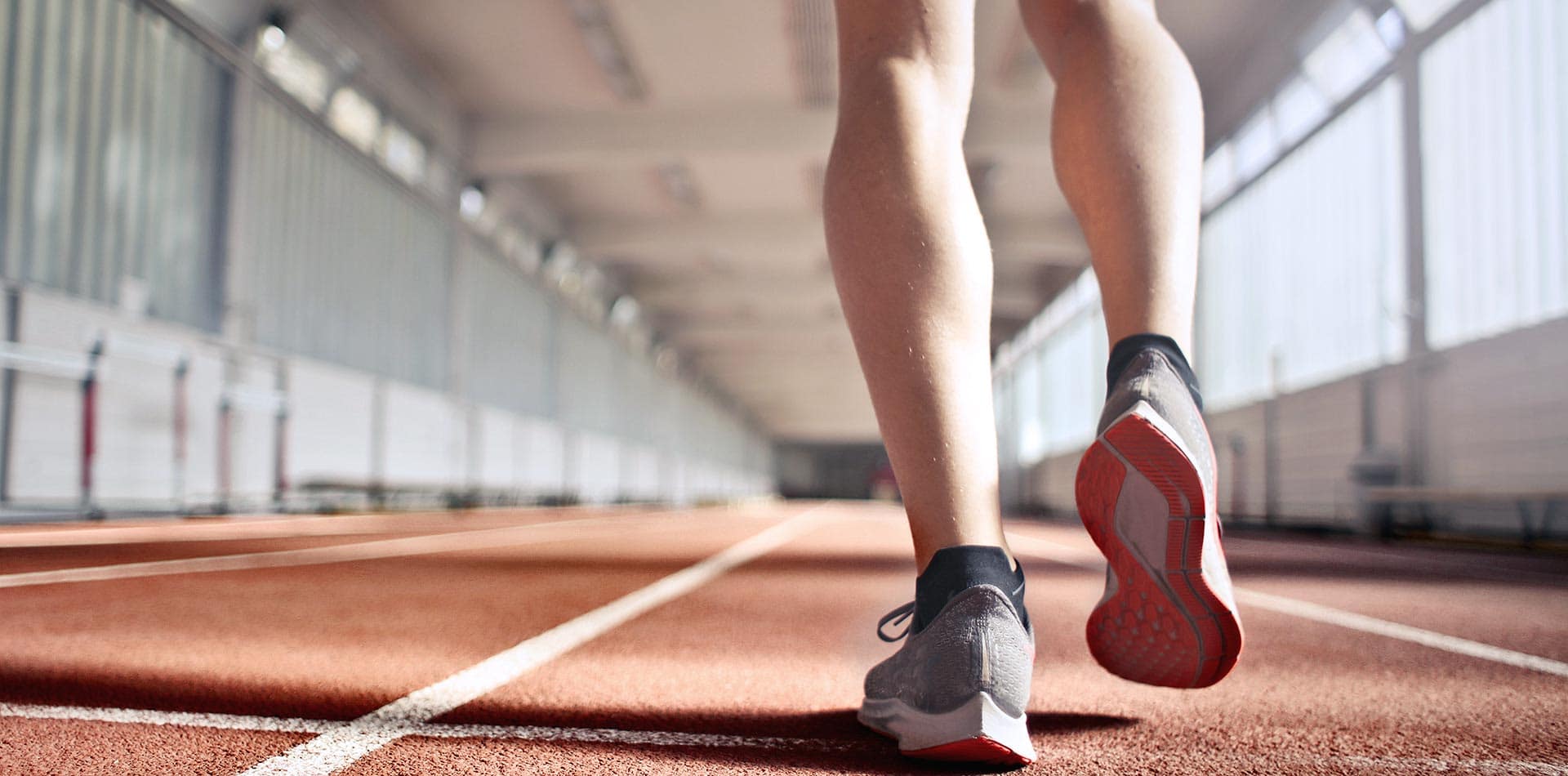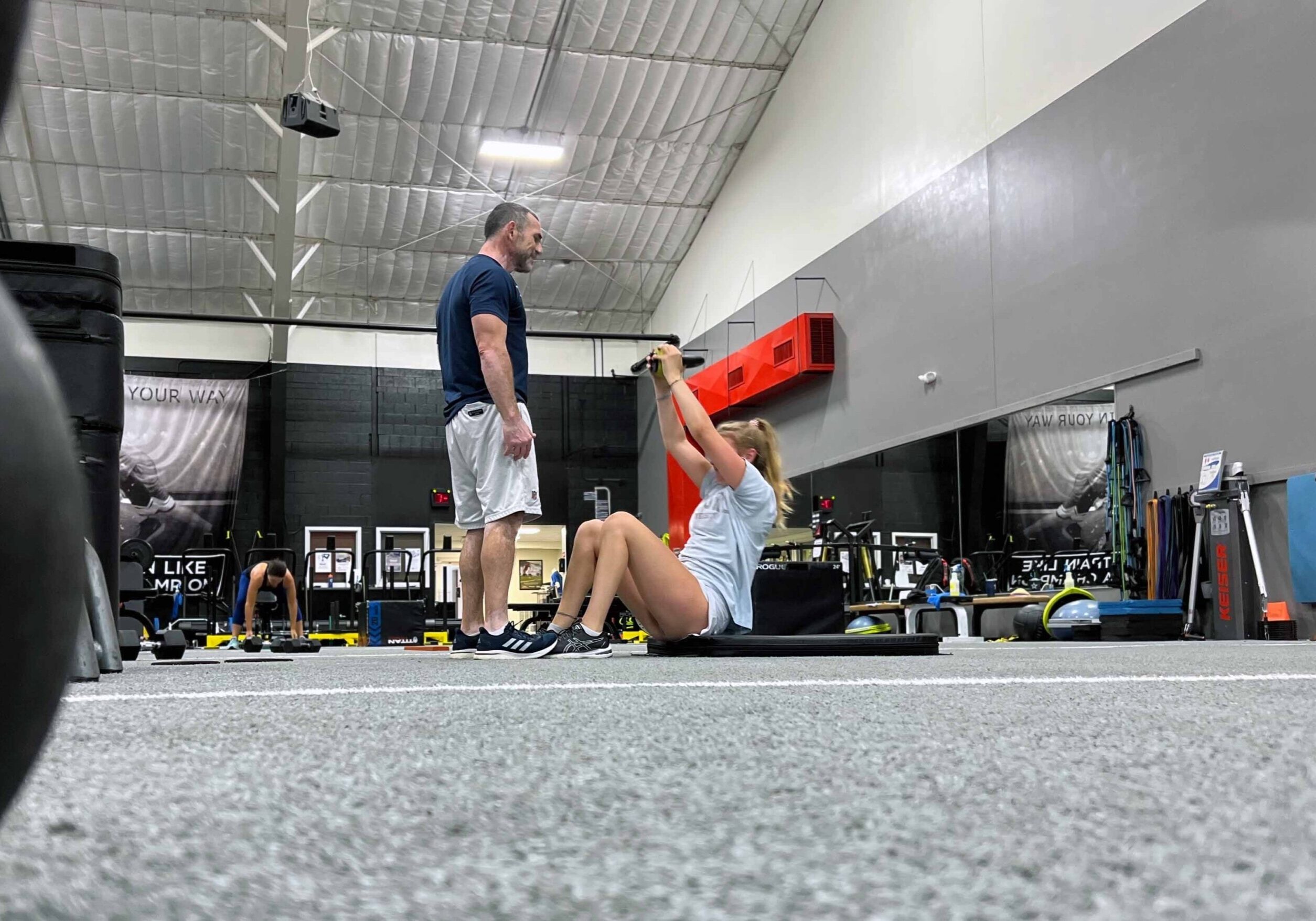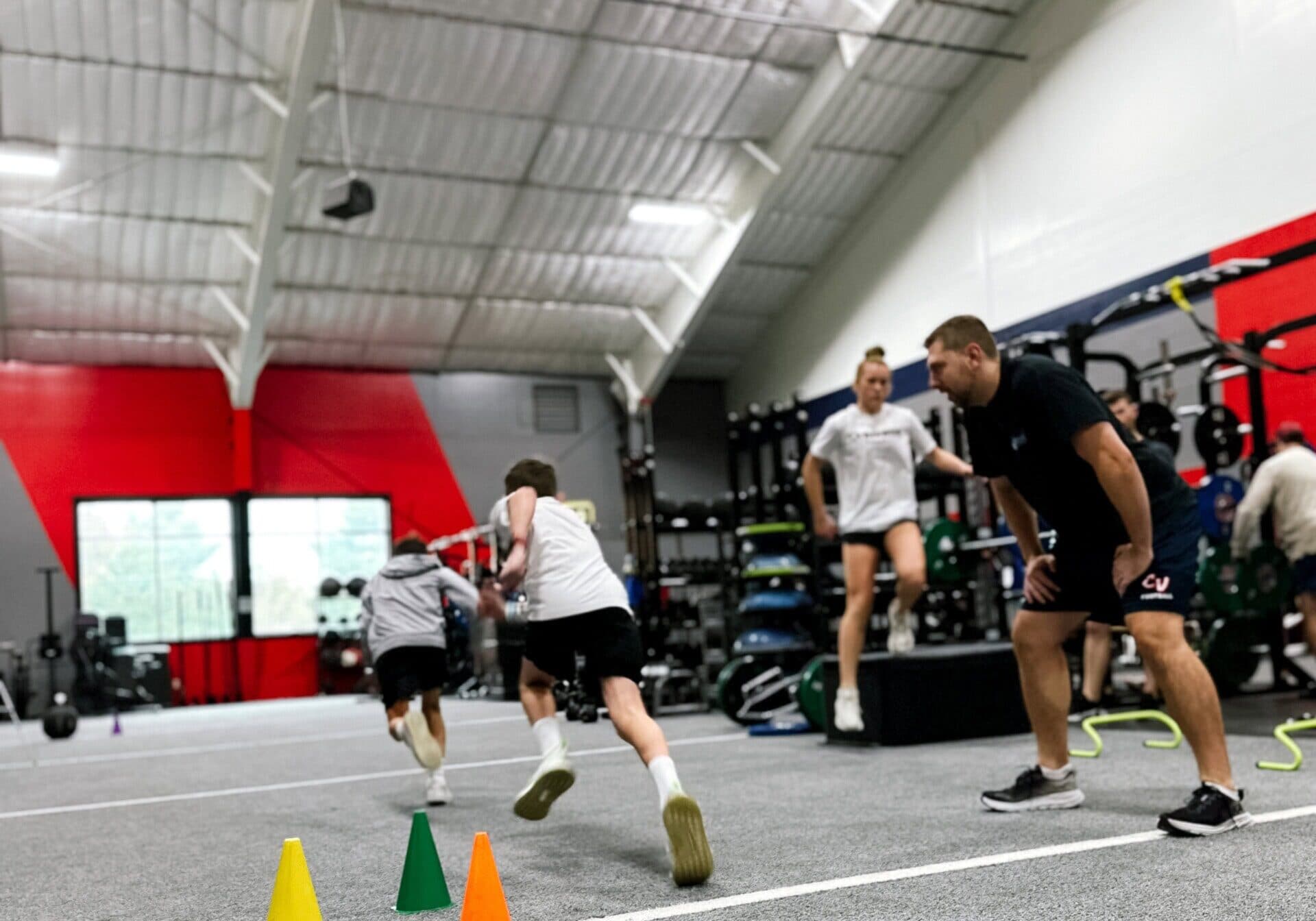
4 Relative Strength Standards to Improve Sprint Speed
Let’s face it: if you want to be fast, you need to sprint fast—and sprint fast often. Speed is a skill after all, and like any other skill, improvement is a result of a learn-by-doing approach.
Charlie Francis was the first real coach to bring this approach to the masses when he preached how max-effort sprints (above 90-95% intensity) are the key to getting faster. Mike Boyle has expanded on this concept more as of late, albeit with an added element that makes a massive difference: a timer. As Boyle puts it, incorporating timed sprints into athletes’ programs twice a week has been the most impactful change he and his staff have implemented in the last decade. Since we started doing the same with the athletes at our facility, we’ve come to see the undeniable valuable of timed sprints. The rationale behind its benefits could make for a full article in and of itself, but the point is clear: timed sprints work.
The question then becomes, is sprinting fast (and often) the only way to get faster? Hardly. Yes, consistently running timed sprints may be the most foolproof way to improve speed. However, relying solely on sprinting at the expense of all else will inevitably lead to a glass ceiling. What else, then, can be done to make athletes faster? Most of the time, the answer is simple: increase relative strength. Relative strength simply refers to how strong an athlete is relative to their own body weight. Why? Relative strength is a non-negotiable linchpin of speed that, if lacking, renders all of the other contributing factors obsolete.
One of my favorite analogies in this context comes from Eric Cressey, who says that strength should be thought of as a glass of water. Inside the glass are all the physical qualities of athletic performance: speed, power, agility, endurance, etc. It goes without saying that the bigger the glass, the more these physical qualities can be expressed. The premise is this: it doesn’t matter how good an athlete’s sprinting mechanics are or how “fast” their feet can move through an agility ladder. In the absence of relative strength, they can’t (and won’t) be able to develop elite speed.
The importance of relative strength stems from the fact that sprinting speed is largely dictated by stride length—or, more specifically, the measurable distance an athlete covers with each step. Case in point: when Usain Bolt ran the 100-meter in 9.58 seconds, he took a total of 41 steps. That was three fewer steps than the race’s runner-up (44 steps) and 5-6 steps fewer than most of the others (46-47 steps). While there are multiple factors that play a role in this regard, I believe there’s nothing that correlates with stride length more directly and to the same degree as relative strength. The idea is that as an athlete’s relative strength improves, they’re able to exert more force into the ground and thus propel the body farther forward upon foot contact. The result is more distance covered on each stride which, ultimately, leads to greater sprinting speed.
So, what are the most indicative markers of relative strength in relation to sprinting speed? Going further, what are good (and elite) relative strength numbers to shoot for when an athlete is looking to get faster? Arguments could be made on behalf of a number of exercises, but there are four in particular that we’ve seen to be especially indicative of speed: Trap Bar Deadlifts, Rear-Foot Elevated Split Squats, Chin-Ups, and Sled Pushes. The standards that accompany these exercises aren’t exact by any means, but rather the result of what we’ve seen with hundreds of athletes. Learn more about our Sports Performance Program here at Universal Athletic Club.
1. Trap Bar Deadlifts
Ryan Flaherty, a well-renowned speed coach, has said he can predict an athlete’s 40-yard dash and vertical jump height with 99% accuracy based solely on their force number, which is calculated by dividing trap bar deadlift strength by an athlete’s body weight. While that may be a bit of an oversimplification, the point is that relative strength in the Trap Bar Deadlift may be the most indicative weight room metric of all as it relates to sprinting speed.
Think about it: Strength in the Trap Bar Deadlift is a direct byproduct of how much force an athlete exerts into the ground. When an athlete fails to get the bar off the ground, that simply means they weren’t able to push hard enough into the ground to lift the weight.
What makes the trap bar superior to Squats and conventional Deadlifts in this case is that it combines the best of the squat pattern with the best of the hinge pattern. This places a greater emphasis on the quads than conventional Deadlifts, and hammers the posterior chain (glutes and hamstrings) more effectively than Squats. The Trap Bar Dead lift also recruits the traps, upper back, lower back and the entire musculature of the core while simultaneously mitigating risk.
Relative Strength Standards: 1-RM Trap Bar Deadlift
- Males (good): 2.25 x bodyweight
- Males (elite): 2.5 x bodyweight
- Females (good): 2.0 x bodyweight
- Females (elite): 2.25 x bodyweight
2. Rear-Foot Elevated Split Squats (RFESS)
RFESS (also known as Bulgarian Split Squats) have become all the rage as of late, and for good reason. They’re one of the best exercises in existence for increasing functional strength, building muscle, improving lower body function and enhancing health and longevity.
What separates it from other unilateral exercises like Single-Leg Deadlifts (which are hip-dominant) and Split Squats (which are mostly knee-dominant) is that it recruits the glutes, hamstrings and quads simultaneously by challenging both the anterior and posterior chain.
In addition, RFESS are about as “functional” as it gets in relation to performance (besides actually sprinting), as they train single-leg stability and balance, challenge many of the oft-neglected lower body stabilizers, and—most importantly—mimic the locomotive pattern.
RFESS are also valuable for remedying dysfunction, strengthening weak links and bulletproofing the lower body against injury. If an athlete has significant strength/mobility discrepancies between sides, faulty movement mechanics, or specific weaknesses (among other issues), RFESS will provide immediate feedback and subsequently address any potential red flags.
To evaluate relative strength, we like to use a five-rep max holding dumbbells/kettlebells for this movement.
Relative Strength Standards: 5-RM for RFESS
- Males (good): 0.75 x body weight (e.g., two 75-pound DBs for a 200-pound male)
- Males (elite): 1.0 x body weight (e.g., two 100-pound DBs for a 200-pound male)
- Females (good): 0.5 x body weight (e.g., two 40-pound DBs for a 160-pound female)
- Females (elite): 0.75 x body weight (e.g., two 60-pound DBs for a 160-pound female)
3. Chin-Ups
The idea that Chin-Ups correlate with speed seems counter intuitive at first. You sprint with your legs, after all, not your arms—right?
Hardly. If you’ve ever tried sprinting without using your arms, you know that the absence of upper-body strength and power is a major hindrance to speed.
On top of the fact that Chin-Ups are the most basic marker of relative strength, the rationale is simple as it applies to the sprinting motion: the harder the arms drive back, the harder (and faster) the legs drive into the ground. Remember, sprinting isn’t a lower-body exercise; it’s a dynamic, full-body activity.
There are a few reasons why Chin-Ups are more reflective of speed than other upper-body exercises like the Bench Press. For starters, the powerful shoulder extension that takes place during a sprint involves the same muscles (the entire upper back, essentially) that are worked when performing Chin-Ups. This powerful shoulder extension helps to counterbalance the opposite leg and aids in keeping the body aligned, which allows for more force to be put into the ground on each step.
Moreover, Chin-Ups can improve posture by strengthening the upper back, which helps in avoiding thoracic flexion and, as a result, facilitates an upright torso position. As an added bonus, Chin-Ups require high levels of core control, as the torso has to remain stable while the hips are in a slightly flexed position.
Again, we like to use a five-rep max here as a gauge of relative strength. Extra load should be added via a weight belt.
Relative Strength Standards: 5-RM Chin-Up
- Males (good): 1.3 x body weight (e.g., 60 pounds added weight for a 200-pound male)
- Males (elite): 1.4 x body weight (e.g., 80 pounds added weight for a 200-pound male)
- Females (good): 1.0 x body weight
- Females (elite): 1.1 x body weight (e.g., 15 pounds added weight for a 160-pound female)
4. Sled Pushes
The old train of thought regarding Sled Pushes was that using loads beyond 10-percent of an athlete’s body weight would have little to no carryover to speed. In recent years, however, more and more research has come out in support of the relationship between heavy sled work and sprinting speed.
Here’s why: Heavy sled pushes are a direct reflection of single-leg strength and power at specific joint angles. More specifically, pushing a heavy sled requires an athlete to exert maximal force into the ground from an accelerative position. Going even further, heavy sled work provides mechanical exposures to more acute angles similar to acceleration, which isn’t the case when lighter loads are used.
When executed properly, the 45-degree angle of the torso, hips, and shins mimics optimal posture during acceleration. This can be a game changer as it relates to building single-leg strength at sprint-specific angles, increasing the amount and rate of force production into the ground, and reinforcing knee drive, hip separation and a full hip range of motion.
Note that the weights for the below relative strength standard can vary depending on the flooring.
Relative Strength Standard: 10-yard Sled Push
- Males (good): 4.5 x body weight
- Males (elite): 5.0 x body weight
- Females (good): 4.0 x body weight
- Females (elite): 4.5 x body weight




